|

William Blake’s Radicalism
Iain Sinclair walks William Blakes “London“
youtube
_______________________
“The Human Abstract”
William Blake
Pity would be no more,
If we did not make somebody Poor:
And Mercy no more could be,
If all were as happy as we;
And mutual fear brings peace;
Till the selfish loves increase.
Then Cruelty knits a snare,
And spreads his baits with care.
He sits down with holy fears,
And waters the ground with tears:
Then Humility takes its root
Underneath his foot.
Soon spreads the dismal shade
Of Mystery over his head;
And the Catterpillar and Fly,
Feed on the Mystery.
And it bears the fruit of Deceit,
Ruddy and sweet to eat;
And the Raven his nest has made
In its thickest shade.
The Gods of the earth and sea
Sought thro’ Nature to find this Tree
But their search was all in vain:
There grows one in the Human Brain.
via biblioklept
_______________________
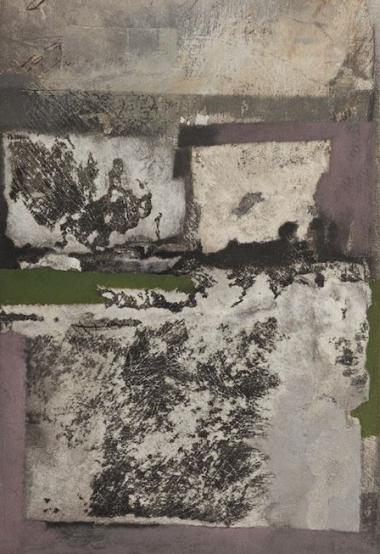
Erratics
1987
Alexander Mackenzie
1923 - 2002
_______________________
Conceptual Personae
Larval Subjects
Every philosophy is populated by a conceptual persona that functions as its transcendental unity of apperception or the principle by which it is struck by questions and problems and through which it forges and links concepts and grasps phenomena. ...(more)
_______________________
A Beacon In The Sand
Tyler Sage
dark mountain
We might begin with the image of American history as a great tidal wave of progress. A wave launched with the appearance of the colonists; a wave rolling with greater and greater momentum westward across the continent. It brushed aside everything that resisted it. It used covered wagons and steamships, homesteads and railroads, guns and axes; it used laws and politics, noble speeches and the rhetoric of free enterprise; it used corporate charters and city charters and civic pride. It remade everything it touched.
This is a rather unreconstructed metaphor – we are, for example, bypassing the question of what this wave might look like to a Native American standing in its way – but it is at the same time a useful one. It captures something of the old notion of Manifest Destiny, and a bit of the American view of its own history as one of an inevitable, necessary advancement. It captures something of the feeling of propulsion that can seem at times to occupy the heart of the so-called American experiment. But it is also useful because of the questions it raises. If our history is to be seen, metaphorically, as a wave of progress sweeping across the continent, what happens when that wave collides with the western wall of the Pacific Ocean? That is, what happens when the wave runs out of land?
...(more)
_______________________
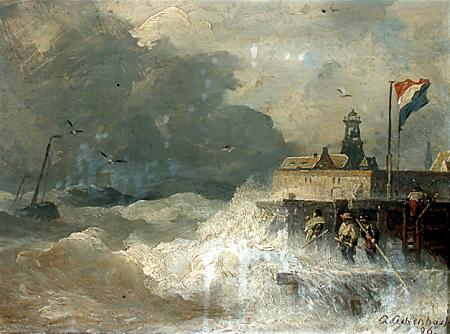
Andreas Achenbach
(1815-1910)
_______________________
The Precariat [pdf]
The New Dangerous Class
Guy Standing
from the preface
This book is about a new group in the world, a class-in-the-making. It sets out to answer fiveve questions: What is it? Why should we care about its growth? Why is it growing? Who is entering it? And where is the precariat taking us?
That last question is crucial. There is a danger that, unless the precariat is understood, its emergence could lead society towards a politics of inferno. This is not a prediction. It is a disturbing possibility. It will only be avoided if the precariat can become a class-for-itself, with effective agency, and a force for forging a new ‘politics of paradise’, a mildly utopian agenda and strategy to be taken up by politicians and by what is euphemistically called ‘civil society’, including the multitude of non-governmental organisations that too often flirt with becoming quasi-government organisations.
We need to wake up to the global precariat urgently. There is a lot of anger out there and a lot of anxiety. But although this book highlights the victim side of the precariat more than the liberating side, it is worth stating at the outset that it is wrong to see the precariat in purely suffering terms. Many drawn into it are looking for something better than what was offered in industrial society and by twentieth century labourism. They may no more deserve the name of Hero than Victim. But they are beginning to show why the precariat can be a harbinger of the Good Society of the twenty-first century. The Provisional University ... an autonomous research project that emerges in response to the precarious conditions we find ourselves living and working in and a desire to transform them. For us this has meant developing research practices that are situated within the crises of our everyday lives. In this context, research is not a privileged, academic pursuit tied to pre-existing goals, but a constructive process that we enter into with other people who share our problems. Through this process we can help to create the tools, forms of articulation, actions and ways of organizing that are necessary to expand our social power now.
_______________________
The Privatization of Childhood
Childhood has become a period of high-stakes preparation for life in a stratified economy.
Megan Erickson
adapted from Class War: The Privatization of Childhood
(....)
Never has pulling oneself up by one’s bootstraps been more plainly a cruel action than when prescribed as a policy regime for large swaths of the population.
(....)
Poverty pathologizes people who are losing in capitalism rather than concrete economic sources: “There are victims, but no victimizers.” The language of “poverty” keeps us from questioning and critiquing our economic system in a way that “wealth inequality” and “class disparity” — or class war — does not.
But it is a class war in which we find ourselves, involving not just men and not just women, but children. Researchers at the Russell Sage Foundation have documented a shift in the way American children are raised that parallels the political-economic context in which they grow up.
(....)
What is at stake when some American children go to school hungry and others go to school in $1,000 Bugaboo strollers? Under the “do what you love” ethos of neoliberal capitalism, life paths prescribed by class but framed as parental choices — Public or private? Gifted and talented, general, or special education? — segregate American children from birth through adolescence and into adulthood as never before, reformulating their upbringings into private family projects and education as a competitive “hunger games” for the material resources and social connections required to secure economic success.
...(more)
_______________________
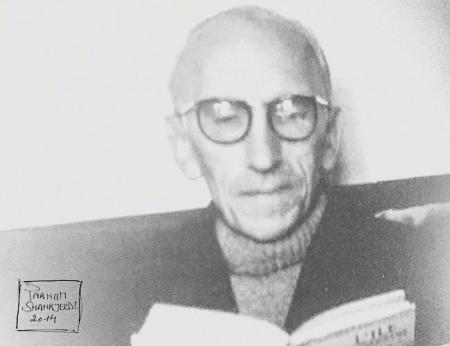
Newly available photograph of Maurice Blanchot
via Spurious

Garden on Lake Thun
1913
August Macke
d. September 26, 1914
_______________________
Consciousness
Attila József
translated from the Hungarian by Michael Beevor
See, here inside is the suffering,
out there, sure enough, is the explanation.
Your wound is the world -- it burns and rages
and you feel your soul, the fever.
You are a slave so long as your heart rebels -
you become free by making it your pleasure
not to build yourself the kind of house
in which the landlord settles down.
.
He has fully become a man
who has in his heart no mother, father,
who knows that he gets life
only as an extra to death
and, like something found, he will give it back
at any time, that's why he keeps it safe,
who is not a god and not a priest
either to himself or anyone.
.
Like a pile of hewn timber
the world lies heaped up on itself,
one thing presses and squeezes and
interlocks with the other,
so each is determined.
Only what is not has a bush,
only what will be is a flower,
what is crumbles into fragments.
.
In the goods station yard
I flattened myself against the foot of the tree
like a slice of silence; grey weeds
reached up to my mouth, raw and queerly sweet.
Dead still I watched the guard, (what was he sensing?)
and, on the silent waggons,
his shadow which kept obstinately jumping
upon the lustrous dew-laden coal-lumps.
.
I live by the railway line. Many trains
go past here and, time and again,
I watch the lighted windows fly
through the fluttering fluff-darkness.
So through eternal night
rush illuminated days
and I stand in each cubicle of light,
I lean upon my elbows and am silent.
via Tom Clark
_______________________
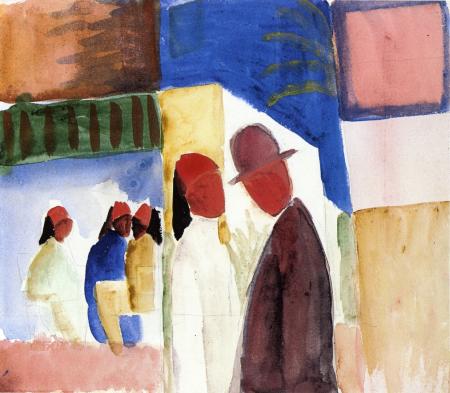
On the Street
August Macke
1914
_______________________
on fences and fractures
Kenan Malik
(....)
One of the key points I want to make tonight is that though many on the left embrace multiculturalism as a good, and think of the defence of multiculturalism as a challenge to anti-immigrant hysteria, it is in fact rooted in the same kind of view of migrants and their differences. While critics of immigration think that the otherness of migrants is an argument to keep them out, multiculturalists, consciously or unconsciously, reify that otherness through public policy.
But before I can discus that, I need first to unpack some of the myths – or, to be more generous, assumptions – upon which contemporary discussions about immigration and culture are constructed. The first is the idea that Europe used to homogenous, but has been made diverse by immigration. Both those hostile to immigration and those supportive of multiculturalism accept this claim. They only do so because of historical amnesia, and because we have come to adopt a highly selective standard for defining what it is to be diverse.
(....)
Diversity and multiculturalism are often taken to be synonymous. They are not. That’s another of the myths or assumptions that I want to question. To conflate diversity and multiculturalism is to accept the narrow vision of diversity that I have challenged.
Part of the problem in discussing multiculturalism is that the term has come to acquire a variety of meanings, which makes it highly slippery. For a start, the term ‘multicultural’ has come to define both a society that is particularly diverse, usually as a result of immigration, and the policies necessary to manage such a society. It has come to embody, in other words, both a description of society and a prescription for managing it. Multiculturalism is both the problem and the answer – a highly invidious conflation.
Another way of putting this is that multiculturalism come to define both the lived experience of diversity and a political process the aim of which is to manage that diversity. The trouble is, the political process often undermines what is good about the lived experience.
...(more)
_______________________

Couple in the woods
August Macke
1912
_______________________
A Chorale Of Dead Souls
Jeremy M. Davies reviews The Dirty Dust: Cré na Cille by Máirtín Ó Cadhain (tr. Alan Titley)
the quarterly conversation
Long have I labored in the temples of translation, if not as a cleric, then let us say as a graying vestal. In those drop-ceiling’d holy sites, papered with grant applications and hung with the leathered hides of forgotten interns, rumors have long persisted of the great untranslated Irish-language novel Cré na Cille, its title traditionally English’d as “Graveyard Clay.” Now called The Dirty Dust (the better to retain author Máirtín Ó Cadhain’s alliterative original, says its introduction), it has at last been made available to Anglophones thanks to translator Alan Titley and the Yale Margellos World Republic of Letters.
“An influence on Finnegans Wake!” was one commonly heard refrain concerning this as-yet obscure object of desire, never mind that the two novels’ respective dates of publication make this a strained point at best. “In a league with Flann O’Brien!” was another, more reasonable, certainly more accurate line. To complete the trifecta, I even heard a few variations on “Beckett loved it!”—presumably unsubstantiated, but nonetheless tantalizing. Whether or not Ó Cadhain’s prose could really match or anyway trot sans embarrassment alongside the mighty strides of this Holy Trinity, the book’s premise was enough to lend credence to the rumors. Cré na Cille comes with an unbeatable “elevator pitch” that rhymes most deliciously with the work of its author’s best beloved countrymen: it’s none of your garden-variety narratives, following a protagonist or protagonists through which- and whatever conflicts and experiences, no. It’s 100% dialogue, and not just any dialogue, but a chorale of dead souls, every character already having snuffed it and been stuffed into their graves. À la an Our Town or Spoon River cross-pollinated with No Exit, however, these corpses are perpetually, rather hellishly awake, aware, and gabbing in Ó Cadhain’s wonderfully unsplendid hereafter.
...(more)

Mark Rothko
b. September 25, 1903,
_______________________
Tone is an everyday kind of maneuver. It disrupts and communicates aggression, disgust, dis- respect, and humor, among a myriad of possibilities, thereby allowing language to morph into a blanket or a gun. It helps me know how to read the spaces between things. One has an ear out for it always. It’s a thing to be translated. Yours is a good question because it presupposes certain expectations for tone in public encounters, places where equality and sharing are legislated to happen, places where one has expectations for justice, for evenhandedness, and for “we are all just people here” indifference.
-
Claudia Rankine
Claudia Rankine interview
by Lauren Berlant bomb
I met Claudia Rankine in a parking lot after a reading, where I said crazy fan things like, “I think we see the same thing.” She read a book of mine and wrote me, “Reading it was like weirdly hearing myself think.” This exchange is different from a celebration of intersubjectivity: neither of us believes in that . Too much noise of racism, misogyny, impatience, and fantasy to weed out. Too much unshared lifeworld—not just from the difference that racial experience makes but also in our relations to queerness, to family, to sickness and to health, to poverty and wealth—while all along wondering in sympathetic ways about the impact of citizenship’s embodiment. Plus, it takes forever to get to know someone and, even then, we are often surprised—by ourselves, by each other. Claudia and I have built a friendship through consultation about whether our tones are crazy, wrong, off, or right; about whether or not our observations show something, and what. And, through frankness: a form of being reliable that we can trust, hard-edged as it can be, loving as it can be (and sometimes the former is easier to take than the latter). We are both interested in how writing can allow us to amplify overwhelming scenes of ordinary violence while interrupting the sense of a fated stuckness. This interview, conducted via email, walks around how we think with and against the convenience of conventionally immiserated forms of life and art.
...(more)
_______________________
“Some years there exists a wanting to escape...”
Claudia Rankine
from Citizen
/
Don't say I if it means so little,
holds the little forming no one.
You are not sick, you are injured—
you ache for the rest of life.
How to care for the injured body,
the kind of body that can't hold
the content it is living?
And where is the safest place when that place
must be someplace other than in the body?
Even now your voice entangles this mouth
whose words are here as pulse, strumming
shut out, shut in, shut up—
You cannot say—
A body translates its you—
you there, hey you
/
...(more)
Claudia Rankine at the Poetry Foundation
_______________________
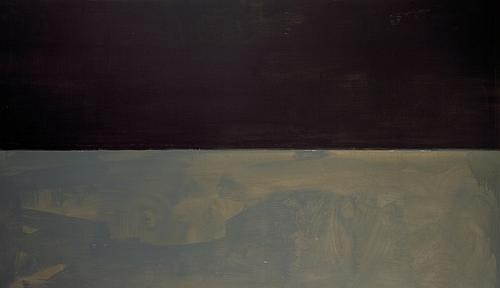
Mark Rothko
_______________________
Poetry and The Metaphysical I
Dorothea Lasky
(....)
The distance between the persona of a poem and the I of the poet is a tricky relationship and not as simple as a nonfiction I. Should the I be the poet? Should it not be the poet? Poets always have to make this hard call. Knowing that even when we make an I so clearly not ourselves, someone will assume this I is us anyway. Or if they know us as live persons, will put their idea of us on our poor little I. An I in a poem with no bodily form to buffer it, just trying to make its own way.
The best gift that a poet can give his or her I is to allow it to be its own cool animal. An I that is a wild thing, a mercurial trickster that resists all definition. That is so close to a self (a self or the self)—and so far away from it at the same time––that the reader can’t help but see a real self in it. But that is a self who makes so many contradictions, who manipulates the reader and his or her expectations to such a degree that the reader is left both full and empty after having encountered it.
Lorca, in his writing on the aesthetic of duende, discusses how when a piece of written art is good or real, it has soul. And that a soul is a kind of demon. That a piece of art is authentic when the demonic is at play in it, when it has gone to the other world and brought a spirit back to inhabit it. And so that when you are experiencing a piece of art with duende in it, you will feel delight and disgust when you encounter the demonic. And that without a little demon, a poem is not a poem at all.
It makes sense. After all, without a demon, how else to make the top of your head blow right off?
...(more)
Wave Composition
_______________________
The cost of happiness
Powerful interests benefit from our increased willingness to monitor and meddle with our mental states
Niki Seth-Smith reviews The Happiness Industry (Verso) by William Davies
Hudson Yard real estate project in New York City is set to be the most ambitious experiment yet in “quantified community”. Set to cater for 5,000 apartments, offices, retail space and a school, Hudson Yard will be built to enable maximal data-mining of its population. “Treating humans like white rats,” as William Davies puts it, “is now becoming integrated into the principles of urban planning.”
Davies’s new book shows how “managing our happiness” is becoming an increasingly lucrative and insidious industry. True to its subtitle, “How the Government and Big Business Sold Us Well-Being”, it exposes the powerful interests that benefit from our increased willingness to monitor and meddle with our mental states. But Davies takes us much further than this. It is not just that Hudson Yard will soon exist. It is the fact that this Panopticon project is being heralded as “social progress” and – most disturbingly – that people actually want to live there.
The Happiness Industry is the story of how we got here. ...(more)
_______________________

Mark Rothko
_______________________
Responding to 'What Is Literary Activism?'
Wendy Trevino, Juliana Spahr, Tim Kreiner, Joshua Clover, Chris Chen, and Jasper Bernes
(....)
We fear the displacement of political antagonisms into the sphere of the literary and the cultural has a long history of helping to aestheticize, derail, and defuse past social movements significantly more skeptical about the relationship between culture and politics, or culture and power. Huey Newton’s 1968 assertion “that culture itself will not liberate us,” for example, is almost unimaginable today— politicians and police help to organize speakouts and poetry slams to prevent disruptive protests, riots, and rebellions from erupting in the streets. Empty rituals of cultural recognition and endless stage-managed “dialogue” are continually offered as substitutes for even minimal reforms to state policy, laws, and the economy.
Imagining the placement of poetry in the philanthropic service of social movements —whether one recoils from this in the name of aesthetic autonomy or considers it a noble sacrifice —continues to limit political action undertaken by poets to the sphere of literary representation. Moreover, even the most salient and confrontational literary activism of our moment requires larger lived struggles for the most limited gains. We do not think that demands around gender in the literary sphere would have the force they do without militant organizing against patriarchy elsewhere. We do not think that demands around racism in poetry would have gained such traction this year absent rebellions in Ferguson and Baltimore.
...(more)
What Is Literary Activism?Amy King
_______________________
Stephen Harper, Serial Abuser of Power:
The Evidence Compiled
by David Beers and Tyee Staff and Contributors
Seventy scams, smears and stings
_______________________
Vanishing Canada: Why we’re all losers in Ottawa’s war on data
Anne Kingston
Stories about government data and historical records being deleted, burned—even tossed into Dumpsters—have become so common in recent years that many Canadians may feel inured to them. But such accounts are only the tip of a rapidly melting iceberg. A months-long Maclean’s investigation, which includes interviews with dozens of academics, scientists, statisticians, economists and librarians, has found that the federal government’s “austerity” program, which resulted in staff cuts and library closures (16 libraries since 2012)—as well as arbitrary changes to policy, when it comes to data—has led to a systematic erosion of government records far deeper than most realize, with the data and data-gathering capability we do have severely compromised as a result.

Woman Picking Flowers
František Kupka
1909
_______________________
Robert Kelly: Festschrift [pdf]
Following the Measure
Eléna Rivera
For Robert Kelly on his 80th Birthday
1.
“Bring in everything you’re thinking about”
and find the way to the exit where the fire
sign burns. The way of finding the measure
whispers, Excess, “the Palace of Wisdom;”
that’s where light comes in at the intersection
where the poet brings back reports of “a place.”
The map shows us, indicates, a way forward.
Dreams of snails take us back again, back to
the beginning again, staying with the measure,
movement of water weaving the language
“formal as fire” weighing upon the shoulders of
that scribe of voice and body and color.
Bring in everything you’ve got and that is a lot
and more, still more, the fire came from listening
to the vocabulary of the dream, that map of
an ancient internalized song where spirits dwell.
Show us how to spill open we will find the means
to measure the words and let the ocean come.
Are we in touch with the sea, air, land? Are we
affected by the contours of our desires? All of them?
I know it depends, so I listen to Mozart and sway
according to internalized scriptures I still don’t
understand, the breath we count and pray with
and the glory of all that is the body and texture.
I sigh as my boat reaches the shore, sails swaying
lightly, a heroine come home where fury almost
got me. I had to follow a guide to lead me out
a guide who honored all and lit the way celebrating
where he “was happiest.” His words held my hand
and something in the world once again stirred.
(....) All quoted material is by Robert Kelly Metambesen _______________________

oracle
photo - mw
_______________________
In praise of Steve Clay and 'Granary'
for 'The Book Undone: Thirty Years of Granary Books'
Jerome Rothenberg
The history of poetry in our time has also been a history of those who provide conduits & vehicles, containers & wrappers, for the physical presentation of poetry: publishers, typographers, printers, designers, or those artists-as-such who are often the collaborators in making poetry a visible, even a visual, art. For this the book has remained the principal vehicle – the material book, like the material poem, still active in the age of virtuality. In the true history of American poetry, which I have long threatened to write & never will, Granary Books, as a press & resource, is exemplary of how poets & related artists in the post-World War Two era were able to establish shadow institutions that operated, nearly successfully, outside the frame of any & all self-proclaimed poetic mainstreams.
...(more)
_______________________
Portrait of the Artist as a Young Mutt: On Patrick Modiano
J.P. Smith
the millions
(....)
Unlike Marcel Proust’s great novel, and unlike the romans fleuves of the last century, such as Anthony Powell’s A Dance to the Music of Time, Modiano’s work, including his most recent novel, Pour Que Tu Ne Te Perdes Pas Dans Le Quartier (So You Don’t Get Lost in the Neighborhood), released in France just before he was awarded the Nobel Prize, is more a series of incremental epiphanies on the past, on lost opportunities, on lost people, on the small gaps in memory that leave his narrators and protagonists in a world from which they are one step removed. The language in the later books is uncomplicated, and what the author leaves out is as important as what he puts on the page.
What readers find most audacious about La Place de l’Étoile is how intimate the writing is. To deal with a period in which one never lived, to make a leap of imagination and bring the voice of the past vividly and credibly to life, is very much a part of what being a novelist is. But the difference between the historical novelist — who, in adding facts and details and color in hoping to contextualize the fiction, inevitably distances the readers — and what Modiano does in this trilogy is to lend an immediacy and an intimacy to the muddy tide of those years, catching the language, the flow, the Zeitgeist of the period without once having to step back to situate us in the narrative. Since La Place de l’Étoile I haven’t stopped following Modiano, reading each new volume as it’s released, and celebrating his being awarded the Nobel Prize in Literature. My apologies, monsieur. My rancor was entirely misplaced.
...(more)
_______________________
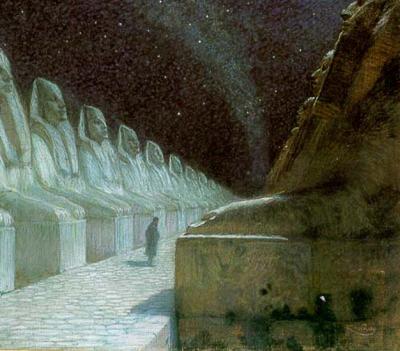
The Way of Silence
František Kupka
b. September 23, 1871
_______________________
Assessing the Legacy of That Thing That Happened After Poststructuralism
Alexander R. Galloway
Now that the SR/OOO wave has crested, crashed, and receded, we can start to evaluate it with the advantage of perspective. I won't attempt to offer an autopsy here, but I do want to address a few points and then offer a prediction for the future. I'll refer to some details about SR/OOO, but I also want to consider it more broadly as symptomatic of the new ontological turn or “that thing that happened after poststructuralism.” In other words, while some of the specific issues within SR/OOO are important, I think that the advent of SR/OOO is most useful for marking an historical boundary, even if it can't explain the larger state of theory and philosophy today.
(....)
After an initial burst of interest, many readers have come to realize that philosophical realism is, in fact, a narrow topic, of interest primary to professional philosophers. Did the world exist prior to humanity's conception of it? If a tree falls alone in the forest, does it make a sound? It turns out such questions are rather pedantic if not a bit frivolous. Part of the problem is that speculative realism was always a rather small clique centered around a group of white, Euro-American philosophy dudes. New materialism, by contrast, has proven to be a space much more amenable for work in a broader spectrum of fields, whether they be media studies, aesthetics, queer theory, feminism, or something else entirely.
(....)
A related point, one that's a bit more zoomed in. After the end of poststructuralism and the subsequent reorganization of knowledge that has taken place in recent years, two new factions have emerged. First are the Reticular Empiricists formed mostly by followers of Deleuze (along with Whitehead as well), and flanked by a formidable army of Latourians. Here we find the process philosophers and affect theorists, including a number of interesting authors like Isabelle Stengers, Brian Massumi, and Steven Shaviro. I would classify several of the new materialists here as well, particularly those Carl Sagan Deleuzians who offer their reflections on slime mold or quantum weirdness. And some of the people affiliated with SR/OOO, but certainly not all, are Reticular Empiricists of one kind or another.
Second are the Generic Communists assembled from the newly revitalized remains of Marxist theory. The great champion here is Badiou. But also Zizek, and those in Negri's circle. I'm thinking also of people like Peter Hallward, Bruno Bosteels, Alberto Toscano, Jodi Dean, McKenzie Wark, Jason Smith, and Benjamin Noys. The anarchists and communization theory folks are here too, Tiqqun, Invisible Committee, Endnotes. And, despite a number of nontrivial discrepancies, I would also put Laruelle here. In my reading Laruelle is essentially an Althusserian Marxist, albeit one mixed with healthy doses of gnosticism and mysticism. He has a theory of generic communism that rivals even that of Badiou.
...(more)
_______________________
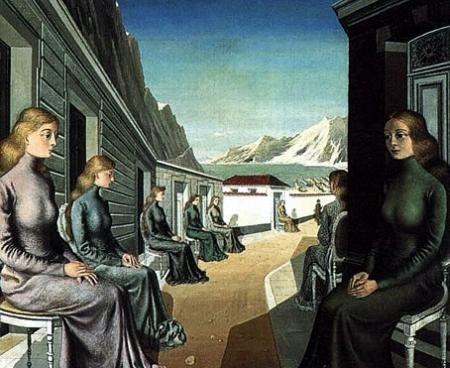
La villa de las sirenas
Paul Delvaux
b. September 23, 1897
_______________________
The Wellness Syndrome
Carl Cederström and André Spicer
reviewed by Peter Bloom
3am
The contemporary age is marked by what appears a definite contradiction. On the one hand, public and social institutions tasked with meeting human needs are struggling under the weight of a continued recession and an economic order that increasingly prioritizes profit at the expense of general welfare. On the other hand, popular discourse and private organizations are progressively emphasizing the centrality of “wellness” for citizens and employees. The Wellness Syndrome by Carl Cederström and André Spicer provides an important and sophisticated critical understanding of this seemingly paradoxical phenomenon. Their book reveals concisely and accessibly—without sacrificing theoretical subtlety—how our current age is marked by a pathological and dangerous fixation with “health” and “wellness,” an obsession that effectively targets individuals with its market-based rhetoric of personal and professional well-being, while strategically masking deeper contradictions of modern neo-liberal capitalism.
...(more)
_______________________

photo - mw
 desert bird
John Coburn
1925 - 2006
_______________________
"We used to know the world inside out"
Wislawa Szymborska
translated from the Polish by Tadeusz Z. Wolanski
We used to know the world inside out:
It was so small that it fitted into two clenched fists,
So easy, that it could be described with a smile,
As ordinary as the echo of old truths in a prayer.
History did not greet us with a victorious fanfare:
It poured dirty sand into our eyes.
Before us there were roads, distant and blind,
Poisoned wells, bitter bread.
Our war loot was information about the world:
It is so big that it fits into two clenched fists,
So difficult that it can be described with a smile,
As strange as the echo of old truths in a prayer.
via Tom Clark
Wislawa Szymborska - The Poetry of Existence
Krystyna Dabrowska
_______________________
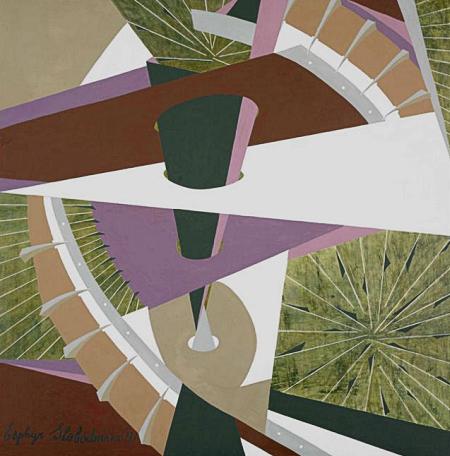
Vortex
Esphyr Slobodkina
b. September 22, 1908 Rediscovering a Pioneer of American Abstraction
Sandra Kraskin
_______________________
A happy state
Why is the welfare state under attack when happiness economics shows it is the system most conducive to human wellbeing?
Benjamin Radcliff
aeon
Most of us are Stoics. We think that happiness is something that individuals find for themselves: the key is to work hard for a good life, and to face adversity with defiance. This ‘rugged individualism’ might fit the American ethos, but it is at odds with a growing body of empirical research that shows that some kinds of societies produce a great deal more satisfaction with life than others. Happiness, in other words, is more social than psychological.
If so, then the obvious step, as Albert Einstein put it, is to ‘ask ourselves how the structure of society and the cultural attitude of man should be changed in order to make human life as satisfying as possible’. Economists, political scientists and other social scientists in the growing field of the political economy of wellbeing, or ‘happiness economics’, are using empirical rather than speculative methods to better understand what makes for satisfying lives. Happiness economics is not to be confused with ‘positive psychology’, which approaches happiness as a matter of individual attitudes. In contrast, scholars of ‘happiness economics’ maintain that, in the aggregate, a satisfying life is rooted in objective conditions, such that the economic, political and social aspects of societies are strong predictors of individual happiness.
...(more)
_______________________
Carnival of Violence: The Politics of Rage and Despair
S.C. Hickman
_______________________
Listening to Refugees: 5 Novels, Stories, and Essays
Pierre Joris
Nomadics
_______________________

John Coburn
_______________________
The Banality of Optimism
Terry Eagleton
from Hope Without Optimism
(....)
William James was restive with this saccharine vision. “Is the last word sweet?” he asks. “Is all ‘yes, yes’ in the universe? Doesn’t the fact of ‘no’ stand at the very core of life? Doesn’t the very ‘seriousness’ that we attribute to life mean that ineluctable noes and losses form a part of it, that there are genuine sacrifices somewhere, and that something permanently drastic and bitter always remains at the bottom of the cup?”
(....)
There is something intolerably brittle about it, as there can be something morbidly self-indulgent about a pessimism that feeds with thinly disguised glee off its own glumness. Like pessimism, optimism spreads a monochrome glaze over the whole world, blind to nuance and distinction. Since it is a general mind-set, all objects become blandly interchangeable, in a kind of exchange value of the spirit. The card-carrying optimist responds to everything in the same rigorously preprogrammed way, and so eliminates chance and contingency. In this deterministic world, things are destined with preternatural predictability to work out well, and for no good reason whatsoever.
...(more)
_______________________

"For those who read dictionaries for pleasure"
pdf
Tom Raworth

"Red Arbor with Dog
c1897
Max Slevogt
d. September 20, 1932
_______________________
On Guy Davenport
Eric Byrd
3 quarks daily
Guy Davenport's essays are more read than his stories – and so would begin a critical lament, if Davenport's use of the modes were more distinct; if his stories did not abide "wholly within the realm of art"; if his essays and reviews were less visionary, were mere journalism, Sunday summaries; if his early essays were not the soil of his late-blooming fiction. For Davenport, criticism carried the demands of storytelling, and vice-versa. Kafka, for instance, is as likely to figure in a story as to provide the subject of an essay. In his Paris Review interview Davenport said that the "The Hunter Gracchus," his essay on Kafka's story, started out as a story, and "The Aeroplanes at Brescia," his picture of Kafka's visit to an early exhibition of flying machines, and one of the wonders of Tatlin! (1974), started out as an essay. Of his compositions he concluded, "It's all one big happy family." Tatlin! was Davenport's first collection of stories, and "The Aeroplanes at Brescia" the first story he'd written – aged forty-three – since some undergraduate Faulknerisms.
Davenport's critical prose is sibling to that of his onetime friend and fellow Pound disciple Hugh Kenner, whose The Pound Era Davenport hailed as a "new kind of book in which biography, history and analysis of literature are so harmoniously articulated that every page has a narrative sense." Like The Pound Era, Davenport's early essays, collected in The Geography of the Imagination, vividly narrate influential encounters and pungently picture shocks of recognition. Degas, tracer of haunches equine and balletic, is awake all night with Muybridge's Zoopraxia, with its leaping nudes and galloping tarpans. Shelley and his guest, a literary banker, inspect a copy of Diodorus; both note the boastful inscription attributed to a pharaoh whose name a Greek source had garbled to "Ozymandias," and they sit down to their respective sonnets.
...(more)
_______________________

Marrowfield, Worcestershire
Robert Colquhoun
d. September 20, 1962,
_______________________
'The Liberty of Horrors'
On Marie Buck's 'Portrait of Doom'
Aaron Winslow
jacket2
In a year when the politics of contemporary experimental poetry have come under renewed scrutiny (to put it mildly), Marie Buck’s new book, Portrait of Doom (Krupskaya, 2015), is timely. It’s a meditation on our contemporary political economic situation that refuses the temptation of leftist sigils, Invisible-Committee-light jargon, and ironized hysterics. Instead Buck roots her poems in a more elusive and spectral discourse that better captures the alienation, strangeness, and complexity of actual life within the folds of a collapsing neoliberal world order.
Portrait of Doom is, for all intents and purposes, a book of political poems.
But at the same time, it’s not.
It’s a difficult book to get a handle on. The political signifiers and discourses within Buck’s poems are not static, unidimensional referents. Instead they are radically overdetermined, rendering an intimate lifeworld that, while not exactly realist, has the same texture and nuance of realism in that it indexes the fragments and relics and detritus of the real world only to overcode and mythologize them.
...(more)
'The architecture and ambience of the maze'
A review of Marie Buck's "Amazing Weapons"
Brandon Brown
12 or 20 (second series) questions with Marie Buck
rob mclennan
_______________________

Woman with a Birdcage
1946
Robert Colquhoun
_______________________
The Artaud Effect
Jay Murphy
ctheory
(....)
... Far from merely the tragic poète maudit who, in Michel Foucault's estimation, represented a "madness [that] is precisely the absence of the work of art, the reiterated presence of that absence," Artaud is increasingly presented as a seminal artist in his own right. In contrast to all of the work from 1923-37 for which Artaud has until recently been best known for, in the far shorter period between 1945-48 Artaud produced the singular drawings, radio broadcasts, and thunderous writings that dwarf the earlier sequence in quantity and, some would argue, in consequence. It is this "later" or "final" Artaud who, in the current circumstances of our mediatized society, proffers a relentless critique of representation that takes on new life and significance. As Stephen Barber has concluded, "in a contemporary moment in which representation assumes a vastly expanded and unprecedented power, in its obliterating contact with the human body as well as with urban environments and creative media, Artaud's anatomization of the process of representation is no longer obtuse, but rather, exact and revelatory."
...(more)
_______________________
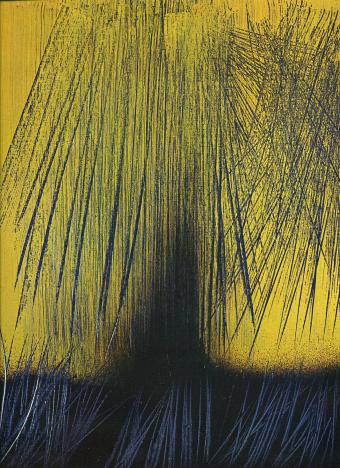
Hans Hartung
b. September 21, 1904
_______________________
Object Lesson
Graham Harman and Andrew Cole
Artforum
_______________________
Proletarian, Speculative, and Weird; A Note on Graham Harman, H.P. Lovecraft, and Racist Apologetics
Kurt Newman
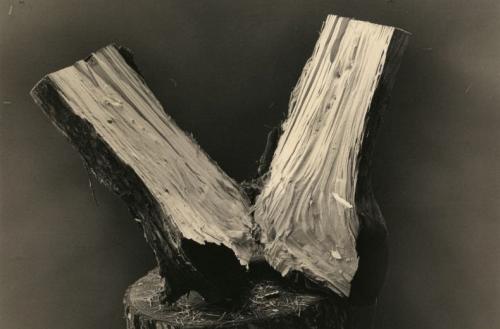
Kawa=Flow
Yamamoto Masao
via arsvitaest
_______________________
Man in a Room
William Carlos Williams
b. September 17, 1883
Here, no woman, nor man besides,
Nor child, nor dog, nor bird, nor wasp,
Nor ditch-pool, nor green thing. Color of flower,
Blood-bright berry none, nor flame-rust
On leaf, nor pink gall-sting on stem, nor
Staring stone, Ay de mi!
No hawthorn's white thorn-tree here, nor lawn
Of buttercups, nor any counterpart:
Bed, book-backs, walls, floor,
Flat pictures, desk, clothes-box, litter
Of paper scrawls. So sit I here,
So stand, so walk about. Beside
The flower-white tree not so lonely I:
Torn petals, dew-wet, yellowed my bare ankles.
_______________________
Finding Your Way Home
Peter Godfrey-Smith reviews Retrieving Realism, Hubert Dreyfus and Charles Taylor
boston review
(....)
... The move to understand things theoretically only comes about when there is some interruption or “deficiency” in our ordinary dealings. A common error in philosophy, however, has been a kind of “intellectualism,” treating all our contact with the world in terms of concepts and representations, assuming that “knowledge is the only mode of experience that grasps things.” The irony is that such intellectualism makes knowledge itself impossible to understand. If we forget that knowledge is derivative from more basic kinds of engagement with the world, we end up “making knowledge, conceived as ubiquitous, itself inexplicable.”
These are central themes also in Hubert Dreyfus and Charles Taylor’s new book, Retrieving Realism. As Dreyfus and Taylor see it, philosophical work in the modern period (in the philosopher’s sense of “modern,” which starts around 1600) has been plagued by a mediational view of how we relate to the world. “Only through” intermediaries can we have contact with things outside us. A few hundred years ago the mediators were supposed to be image-like sensations or ideas. Now they are often sentences, or internal representations of the kind envisaged in artificial intelligence and cognitive science. The mediational approach, for Dreyfus and Taylor, is one that people adopt without entirely realizing it. Working within it, however, leads to many errors and misguided debates. It leads to a dualistic sorting of the world’s contents into mental and physical, and with this comes an acute problem of how the two sides could be related. But from the early twentieth century, a better view has slowly developed, according to Dreyfus and Taylor, especially through the work of Martin Heidegger, Maurice Merleau-Ponty, and Ludwig Wittgenstein. They show us how to have a theory of contact with the world without mediators, through a “reembedding of thought and knowledge in the bodily and social-cultural contexts in which it takes place.”
...(more)
_______________________
There Is No Theory of Everything
Simon Critchley
(....)
We don’t need an answer to the question of life’s meaning, just as we don’t need a theory of everything. What we need are multifarious descriptions of many things, further descriptions of phenomena that change the aspect under which they are seen, that light them up and let us see them anew. That is what Frank was doing with his quotations, with his rich variety of particulars. They allow us to momentarily clarify and focus the bewilderment that is often what passes for our “inner life” and give us an overview on things. We might feel refreshed and illuminated, even slightly transformed, but it doesn’t mean we are going to stop scratching that itch. In 1948, Wittgenstein wrote, “When you are philosophizing you have to descend into primeval chaos and feel at home there.”
...(more)
_______________________
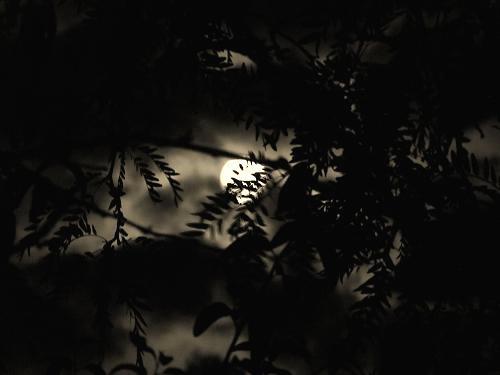
photo - mw
_______________________
These
William Carlos Williams
are the desolate, dark weeks
when nature in its barrenness
equals the stupidity of man.
The year plunges into night
and the heart plunges
lower than night
to an empty, windswept place
without sun, stars or moon
but a peculiar light as of thought
that spins a dark fire -
whirling upon itself until,
in the cold, it kindles
to make a man aware of nothing
that he knows, not loneliness
itself - Not a ghost but
would be embraced - emptiness
despair - (They
whine and whistle) among
the flashes and booms of war;
houses of whose rooms
the cold is greater than can be thought,
the people gone that we loved,
the beds lying empty, the couches
damp, the chairs unused -
Hide it away somewhere
out of mind, let it get to roots
and grow, unrelated to jealous
ears and eyes - for itself.
In this mine they come to dig - all.
Is this the counterfoil to sweetest
music? The source of poetry that
seeing the clock stopped, says,
The clock has stopped
that ticked yesterday so well?
and hears the sound of lakewater
splashing - that is now stone.
_______________________
e-flux journal issue 66:
“Architecture as Intangible Infrastructure,” Issue Two
guest-edited by Nikolaus Hirsch
Editorial—“Architecture as Intangible Infrastructure,” Issue Two
Nikolaus Hirsch, Julieta Aranda, Brian Kuan Wood, Anton Vidokle
More than ever, architects today are called upon to build gestural landmarks and grandiose signature buildings. But architecture was never only about building. It is also about the flows of people, information, and resources that shape space. Today, the practice of architecture often confronts situations where these flows cannot be reduced to modernist managerial approaches to systematizing, structuring, and mastering the potentials of space.
In a two-part “Architecture as Intangible Infrastructure” issue of e-flux journal edited together with Nikolaus Hirsch, the intangible and immaterial flows that today appear to exceed the language of building proper are shown by a number of architects to be made not only of space, but also of information. The first issue of “Architecture as Intangible Infrastructure” last April featured essays by Justin McGuirk on the smart home as the site where companies are jockeying for control over the protocols that will data-mine domestic life; Eyal Weizman on the negative spaces created (or used) by warfare that become primary material witnesses after the destruction of buildings and societies; and Keller Easterling on the information carried in space and in the architect’s mindfulness, and how they already supersede the promises of technology’s universal transcendentalism to make architecture dance to immaterial instructions.
(....)
In this issue, Andrew Herscher asks how architects can approach the question of emergency housing when flows of refugees are fed into housing markets faster than provisional shelters can be built. Sold under the auspices of what Herscher terms “digital shelter,” the replacement of housing solutions with credit takes for granted that a network of market demand can stretch to provide even emergency relief to the most disenfranchised. For Jorge Otero-Pailos, “monumentaries” architecturally combine the performativity of fiction with the fidelity of documentary. When faced with the anachronistic and often contradictory task of narrating a historical monument or heritage site, preservation design can only create entirely new theaters for staging memory.
...(more)
_______________________

Yamamoto Masao
|


























